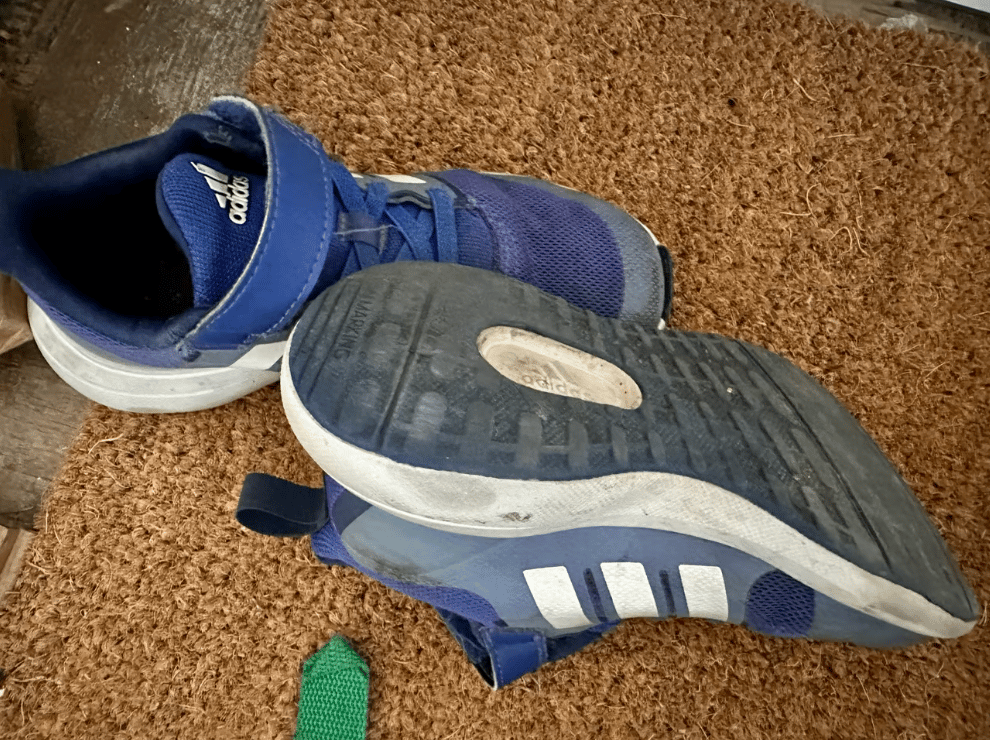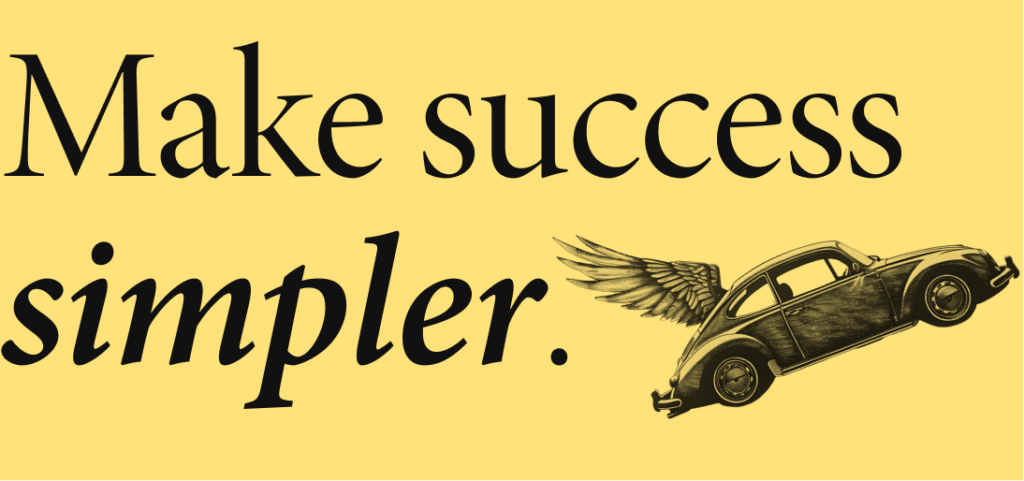Welcome to One Thing Better. Each week, the editor in chief of Entrepreneur magazine (that’s me) shares one way to achieve a breakthrough at work — and build a career or company you love.
Today’s edition is sponsored by Franzy – the ultimate platform to make franchise ownership accessible and achievable for everyone.
You want to do something new. But there’s a problem:
Your current thing is so comfortable.
It’s like…
- Why take a new job, when you know your current one well?
- Why pivot at your company, when the old thing kinda works?
- Why make new friends, when your current ones are… fine?
Well, here’s why: Because you’re allowed to want more. And you deserve to get more.
So how do you escape the trap of being too comfortable? How do you overcome the fear of leaving something behind, and move forward?
Here’s how: I call it transfer of value. It’s a way to move on from old things — and once you master it, you’ll feel more empowered able to seize new opportunities.
Today, I’ll explain how it works — and to start, let’s see how it plays out in a very simple way:
Old comforts are hard to leave

My son Fenn used to hate new shoes. He’d kick and scream and refuse to wear them.
“They’re not comfortable,” he’d always say. “I want my old shoes.”
And every time, I told him the same thing:
“Fenn,” I’d say, “your old shoes used to be new shoes. And you hated them when they were new! Then you wore them, and they became comfortable. That will happen again with these new shoes. Your new shoes will become your old shoes.”
This never worked. I mean, he’s a child.
But it got me thinking: This is the mistake we all make, in some way.
Fenn was conflating something he wants (comfort) with the current source of what he wants (old shoes).
If we want to move forward with confidence, we must de-couple these things. We must know what we want, and see a better way get it.
So here’s how to do that.
How to know what we want
When Fenn complains about his shoes, he’s going through a logic chain — and it’s a very familiar one:
- My old thing has a distinct valuable.
- I’m afraid to give up that distinct value.
- Yes, I see some benefits of a new thing — but I’m not sure it’ll include that distinct value.
- Therefore, I’d rather keep the old thing — even if it has many downsides.
In Fenn’s case: (1) His old shoes are comfortable. (2) He’s afraid to wear uncomfortable shoes. (3) He knows that his new shoes are sturdy and not smelly, but he’s unsure if they’ll be comfortable. (4) Therefore, he’s willing to keep his old shoes, even though they’re stinky and falling apart.
You’ve done this too, haven’t you? I sure have!
At age 28, I was an entry-level editor at Boston magazine. I got a job offer from Men’s Health, which meant moving to New York City — my dream! But I nearly turned it down. Why? Because I followed the same logic chain:
(1) Boston magazine was comfortable, and I was well-liked there. (2) I was afraid of proving myself in a new environment. (3) Men’s Health offered more career opportunities, and it paid better, but I wasn’t sure if I’d also be valued there. (4) Therefore, maybe it’s better to just stay at Boston.
Had I stayed, I would have stunted my career growth and abandoned my dreams. So, how do we escape this trap?
It’s time for a “value transfer”
Before we give up something old, we must understand what we truly value about that old thing. Then we must find a clear pathway to getting it in the new thing.
We don’t often think about this — not consciously, at least. But we must.
Here are four questions to ask yourself, whenever you’re weighing old against new.
- What do I value most about the old thing? This is its “Distinct Value”.
- What are the benefits of the new thing?
- Can the old thing’s Distinct Value be found in the new thing — and if so, how?
- Once that value has been transferred, am I happier?
In other words, you’re isolating the thing you love about the old thing, and then thinking about how you can find it in the new thing. Then you imagine having it all — the value of the old thing, plus all the benefits of the new thing. And you ask yourself: Am I happier this way?
If the answer is yes, you take action.
This is basically what I did at Boston magazine, when I thought about going to Men’s Health.
I thought…
- What do I value most about the old thing?
People liked me. I arrived every day feeling supported and trusted. That was the Distinct Value. - What are the benefits of the new thing?
More pay, major career move, living in New York, and a new adventure. - Can the old thing’s Distinct Value be found in the new thing — and if so, how?
In other words: Can I become well-liked at Men’s Health? Well, let’s see… why did I succeed at Boston? It was because I’d made friends and proven my abilities. And how did I do that? By being nice and working hard. I can do that at Men’s Health too! - Once that value has been transferred, am I happier?
Let’s imagine it: I’ll be well-liked and trusted at Men’s Health, will make more money, will be further along in my career, and will be living where I’d always wanted to. Yes, I would be happier.
Voila — the value transfer was complete. I took the job, moved to New York, and went on to build the life I have today.
So, what value will you transfer?
I get it — leaving things is hard. Change is scary. So let’s remember this: Although an old thing may be good, there is nothing inherently good about something old.
Many old things are wonderful, of course! Old friends, old t-shirts, old habits — we should treasure and protect the ones that still give us joy. But oldness by itself doesn’t make something better. We can find greatness in new things too.
Like I said before: You are allowed to want more. And you deserve to get more.
So find the best parts of old things.
Then keep that part, and upgrade everything else.
That’s how to do one thing better.
Start your journey to business ownership!

If you’re a dreamer, a go-getter, or someone looking to own a business, listen up: Franzy is the ultimate platform to make franchise ownership accessible and achievable for everyone, from corporate escapees to side hustle seekers and investors.
Franzy does more than just list franchises — it’s equipped with the Franzy Fit Score, an AI-powered matching tool that finds the best brands for you based on your financials, experience, risk tolerance, and goals. You can also get pre-qualified to see exactly what you can afford, check brand availability in your area, and discover the hottest new concepts hitting the market.
And if you need guidance, Franzy’s team of expert coaches can help you navigate the world of franchising and find the right opportunities for you. So, whether you’re just starting or looking to expand, Franzy’s got everything you need.
Head over to franzy.com today and start your journey to business ownership.
*sponsored
Final notes for today
P.S. Did you disagree with the candle problem? After last week’s newsletter about preventing miscommunications, many of you wrote me to disagree with Duncker’s candle problem.
Quick recap: Duncker instructed people to attach a candle to the wall. But as OTB reader Kelly wrote me: “It asked the solver to attach the candle to the wall. The solution shows how to attach the box to the wall.”
In other words, Kelly and others were saying, the instructions were misleading.
This got me wondering: Did I miscommunicate his instructions? I’d only read about his experiment; his instructions are commonly described as asking people to “affix” or “attach” the candle. But what did Duncker actually say? So I found his 1945 book, where, on page 97, he describes the experiment. Funny enough, although it has become known as “Duncker’s candle problem,” Duncker himself called it the “box problem.” And he instructed people to “fasten” the candle to a “door” — not much different from affix or attach to a wall. So, uhhh… 🤷♂️
But I hear you! There are many ways to interpret the instructions.
